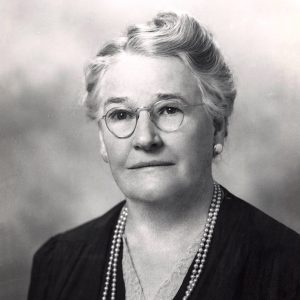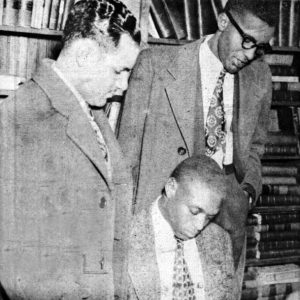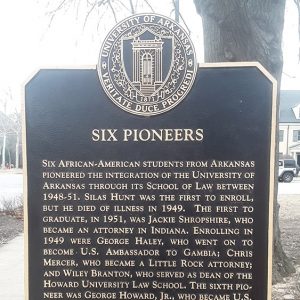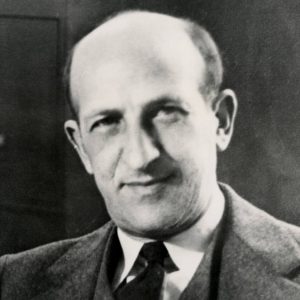calsfoundation@cals.org
University of Arkansas School of Law
Located in Fayetteville (Washington County), the University of Arkansas School of Law is part of the flagship campus at the University of Arkansas (UA). It is part of the University of Arkansas System. The school provides a three-year graduate law degree for students with four years of pre-law coursework. With a 25.9 percent minority enrollment, the school was recently ranked one of the most diverse in the nation by U.S News and World Report. It is also home to the National Agricultural Law Center and offers the nation’s only Master of Law degree in agricultural law. The school offers a student-run free legal clinic, publishes the Arkansas Law Review, and is home to the Young Law Library, the largest collection of legal texts in Arkansas. Significant staff members have included former U.S. President William J. Clinton and Senator Hillary R. Clinton. Notable school alumni include U.S. Ambassador to Gambia George Haley, Senator Mark Pryor, former Arkansas governor David Pryor, and former U.S. Secretary of Transportation Rodney Slater.
History
Attempts to create a school of law at the university began in 1890 with the adoption of a resolution establishing a department for legal studies. By the end of 1891, the department closed due to lack of interest and faculty neglect. None of the seven students enrolled in the program received degrees.
The plan for a school of law in Fayetteville was not revived again until 1923, when economics professor Julian Seesel Waterman proposed a trial law department. Waterman, who had recently completed his Juris Doctorate at the University of Chicago, served as head of the new department. Future congressman Claude D. Pepper of Harvard University joined him as the only other faculty member. The new program required three years and eighty semester hours of credit for graduation, with a set tuition of $60 per year. In 1924, the first official year of the program, fourteen full-time and twenty part-time students enrolled.
In 1927, the School of Law graduated ten students. By that time, the school had joined the Association of American Law Schools and received an “A” rating from the American Bar Association. That year, the school boasted five full-time faculty members and a library of 8,500 volumes. Enrollment rose steadily, and in 1935, with 124 students, the law school moved from its quarters in the basement of University Hall into the former chemistry building. The Great Depression caused enrollment in the program to spike as students sought the possibility of higher incomes, and despite lower wartime numbers, by 1951, facilities were once again inadequate. The board of trustees authorized Dean Robert A. Leflar to raise funds for a new building. The construction of Waterman Hall was completed in 1953.
The structure of the program continued to develop according to demand. In 1952, requirements for entrance were raised to three years of pre-law credits. In 1968, in accordance with the national trend, admission required a full four-year degree in pre-law or other acceptable field, and graduating students were conferred Juris Doctor rather than Bachelor of Laws degrees. In 2006, with an enrollment of over 400, the school moved into the Robert A. Leflar Law Center, current home of the school and of the Young Law Library. In 2011, the school made history when it named as its new dean Stacy L. Leeds, the first American Indian woman to serve as the dean of a law school. Enrollment in fall of 2013 was 390. In October 2013, the School of Law was named the number two in the “Best Value in Legal Education” category by National Jurist and Prelaw magazines and also ranked, for the sixth consecutive year, among the “Top Tier” of all U.S. law schools, public or private, in the U.S. News and World Report rankings.
Integration and Diversity
Despite the school’s current celebration of diversity, it did not always provide equal opportunities to minority students. Although the university itself began admitting African-American students in the 1870s, the law school did not have any minority applicants until 1938, when Edward W. Jacko was denied admission to the school of law solely because he was black. In 1941, the school denied African American Prentice A. Hilburn of Little Rock (Pulaski County) admission and instead paid his tuition to an out-of-state school. In 1948, the school opened a separate teaching facility to accommodate the university’s first black student in half a century, Silas Hunt, who became known as the first of the “Six Pioneers” at the school. After Hunt’s early death, Jackie L. Shropshire became the law school’s first African-American graduate in 1951. He later returned to the campus to help promote integration. Gradually, separate classes were phased out in accordance with student protests and, with the handing down of Brown v. Board of Education of Topeka, Kansas, were eliminated entirely.
Agriculture
The School of Law is host to the National Agricultural Law Center. Created by Congress in 1987, the center uses federal funds to carry out agricultural and food law research. In 2001, the center partnered with the Agricultural Law Center at the Drake University School of Law in Des Moines, Iowa. The center also hosts NationalAgLawCenter.org, a research site for agricultural and food law. Students from the graduate program in agricultural law serve as fellows at the center while earning their degrees. The School of Law has the first—and one of only two in the U.S.—Master of Laws programs in agricultural and food law.
For additional information:
Kilpatrick, Judith. “Desegregating the University of Arkansas School of Law: Clifford Davis and the Six Pioneers.” Arkansas Historical Quarterly 68 (Summer 2009): 123–156.
Leflar, Robert. The First 100 Years: Centennial History of the University of Arkansas. Fayetteville: University of Arkansas Foundation Inc., 1972.
———. “Legal Education in Arkansas: A Brief History of the Law School.” Arkansas Historical Quarterly 21 (Summer 1962): 99–131.
National Agricultural Law Center. http://NationalAgLawCenter.org (accessed June 15, 2023).
Nichols, Guerdon D. “Breaking the Color Barrier at the University of Arkansas.” Arkansas Historical Quarterly 27 (Spring 1968): 3–21.
University of Arkansas School of Law. http://law.uark.edu (accessed June 15, 2023).
Evelyn Baldwin Williams
Siloam Springs, Arkansas
 Brill, Howard Walter
Brill, Howard Walter Education, Higher
Education, Higher Jobelle Holcombe
Jobelle Holcombe  Silas Hunt; Wiley Branton; and Harold Flowers
Silas Hunt; Wiley Branton; and Harold Flowers  C. C. Mercer and Johnathan Carter
C. C. Mercer and Johnathan Carter  Six Pioneers Sign
Six Pioneers Sign  Julian S. Waterman
Julian S. Waterman 



Comments
No comments on this entry yet.